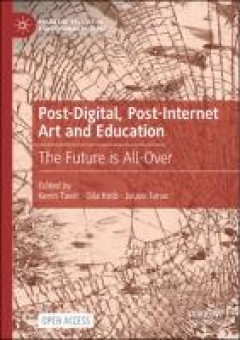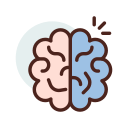Filter by

A New Science for Future : Climate Impact Modeling and the Quest for Digital …
Building on concepts from Science & Technology Studies, Simon David Hirsbrunner investigates practices and infrastructures of computer modeling and science communication in climate impact research. The book characterizes how scientists calculate future climate risks in computer models and scenarios, but also how they circulate their insights and make them accessible and comprehensible to others…
- Edition
- -
- ISBN/ISSN
- 9783839452653
- Collation
- 186p. ; ill.
- Series Title
- -
- Call Number
- 551.5 SIM a

Zombies in western culture: a twenty-first century crisis
Why has the zombie become such a pervasive figure in twenty-first-century popular culture? John Vervaeke, Christopher Mastropietro and Filip Miscevic seek to answer this question by arguing that particular aspects of the zombie, common to a variety of media forms, reflect a crisis in modern Western culture. The authors examine the essential features of the zombie, including mindlessness, ugl…
- Edition
- -
- ISBN/ISSN
- 9781783743308
- Collation
- viii, 93 p. : ill. : ind. ; 24 cm
- Series Title
- -
- Call Number
- 398.21 VER z
Civic media literacies : re-imagining human connection in an age of digital a…
Civic life today is mediated. Communities small and large are now using connective platforms to share information, engage in local issues, facilitate vibrant debate, and advocate for social causes. In this timely book, Paul Mihailidisexplores the texture of daily engagement in civic life, and the resources—human, technological, and practical—that citizens employ when engaging in civic actio…
- Edition
- -
- ISBN/ISSN
- 9781315526058
- Collation
- xiv, 164 p.
- Series Title
- -
- Call Number
- 302.23 MIH c

A fleet street in every town: the provincial press in England, 1855-1900
At the heart of Victorian culture was the local weekly newspaper. More popular than books, more widely read than the London papers, the local press was a national phenomenon. This book redraws the Victorian cultural map, shifting our focus away from one centre, London, and towards the many centres of the provinces. It offers a new paradigm in which place, and a sense of place, are vital to the …
- Edition
- -
- ISBN/ISSN
- 9781783745616
- Collation
- 455 p. : ill. : ind. ; 24 cm
- Series Title
- -
- Call Number
- 941.081 HOB a

Digital media and textuality: from creation to archiving
Due to computers' ability to combine different semiotic modes, texts are no longer exclusively comprised of static images and mute words. How have digital media changed the way we write and read? What methods of textual and data analysis have emerged? How do we rescue digital artifacts from obsolescence? And how can digital media be used or taught inside classrooms? These and other questions ar…
- Edition
- -
- ISBN/ISSN
- 9783839440919
- Collation
- 284 p. : ill.
- Series Title
- -
- Call Number
- 006.7 MAD d

Engines of Order : A Mechanology of Algorithmic Techniques
Over the last decades, and in particular since the widespread adoption of the Internet, encounters with algorithmic procedures for ‘information retrieval’ – the activity of getting some piece of information out of a col-lection or repository of some kind – have become everyday experiences for most people in large parts of the world.
- Edition
- -
- ISBN/ISSN
- 9789048537419
- Collation
- 353 p.: ill.
- Series Title
- -
- Call Number
- 518.1 RIE e

Educational Perspectives on Mediality and Subjectivation
This open access book examines the complex relationship between education, media and power. Exploring the entanglement of education media and power structures, the contributions use various examples and case studies to demonstrate how subjectivation processes and digital structures interact with one another. The book asks which modes of subjectivation can be identified with current media cultur…
- Edition
- -
- ISBN/ISSN
- 9783030843434
- Collation
- 136p. ; ill.
- Series Title
- Palgrave Studies in Educational Media
- Call Number
- 371.33 PAT e
Digital roots : historicizing media and communication concepts of the digital…
As media environments and communication practices evolve over time, so do theoretical concepts. This book analyzes some of the most well-known and fiercely discussed concepts of the digital age from a historical perspective, showing how many of them have pre-digital roots and how they have changed and still are constantly changing in the digital era. Written by leading authors in media and comm…
- Edition
- -
- ISBN/ISSN
- 9783110740202
- Collation
- VI, 318 p
- Series Title
- Studies in Digital History and Hermeneutics
- Call Number
- 302.23 DIG d

Responsible drone journalism
"Camera drones provide unique visual perspectives and add new dimensions to storytelling and accountability in journalism. Simultaneously, the rapidly expanding uses of drones as advanced sensor platforms raise new legislative, ethical and transparency issues. Responsible Drone Journalism investigates the opportunities and dilemmas of using drones for journalistic purposes in a global perspecti…
- Edition
- -
- ISBN/ISSN
- 9781315163659
- Collation
- ix, 99p. : ; 23 cm.
- Series Title
- Disruptions: Studies in Digital Journalism
- Call Number
- 070.43 RES r

Post-digital, post-internet art and education : the future is all-over
This open access edited volume provides theoretical, practical, and historical perspectives on art and education in a post-digital, post-internet era. Recently, these terms have been attached to artworks, artists, exhibitions, and educational practices that deal with the relationships between online and offline, digital and physical, and material and immaterial. By taking the current socio-tech…
- Edition
- -
- ISBN/ISSN
- 9783030737702
- Collation
- xxii, 308 p.; ill.
- Series Title
- -
- Call Number
- 707.1 POS p
 Computer Science, Information & General Works
Computer Science, Information & General Works  Philosophy & Psychology
Philosophy & Psychology  Religion
Religion  Social Sciences
Social Sciences  Language
Language  Pure Science
Pure Science  Applied Sciences
Applied Sciences  Art & Recreation
Art & Recreation  Literature
Literature  History & Geography
History & Geography